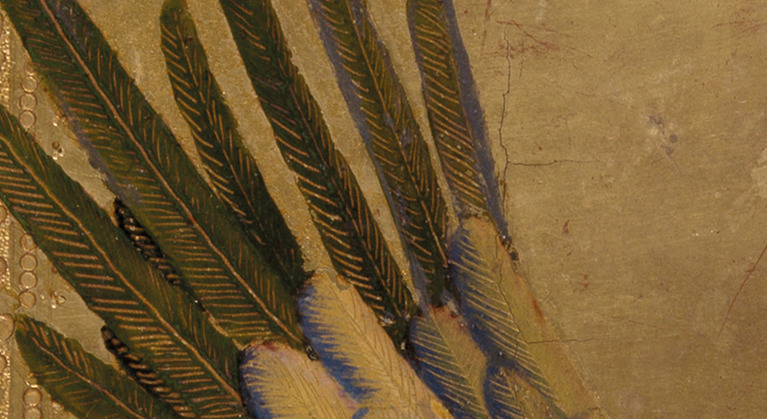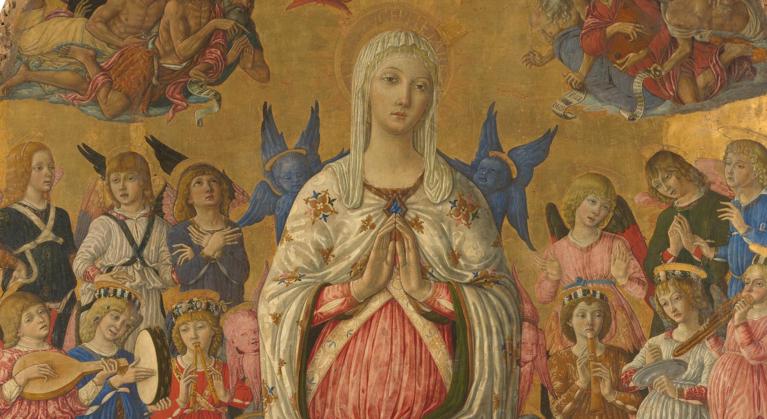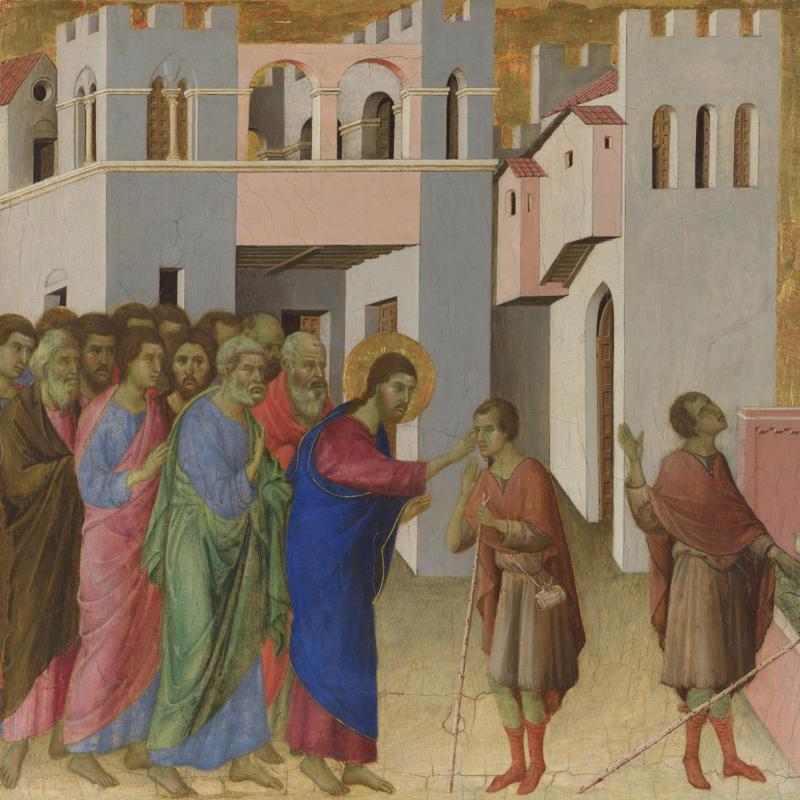About
Siena was a powerful independent republic during the late 13th and 14th centuries. This period of prosperity and peace corresponded with a magnificent golden age of art patronage, in which painters such as Duccio di Buoninsegna, Pietro and Ambrogio Lorenzetti and Simone Martini rose to prominence.
These artists developed a language that was highly distinctive, characterised by exquisite craftsmanship with an emphasis on expressive narrative and refined decorative techniques. Their paintings reflected Siena’s inherent sense of civic pride and piety, her devotion to the Virgin Mary and a desire to remain distinct – no doubt fuelled by her age-old rivalry with Florence, Siena’s Tuscan neighbour and nemesis.
Join us as we study masterpieces of trecento painting, sculpture and architecture, with a focus on works in the current exhibition, and those which can still be admired in Siena today. We will also learn about the influence of Duccio and his contemporaries on other outstanding artists of the next century, including Sano di Pietro, Matteo di Giovanni and Giovanni di Paolo.
Week 1: Art for the Church

Siena’s leading artist was Duccio di Buoninsegna, one of the most innovative figures in Western art who in 1311 completed the city’s most famous altarpiece, the 'Maestà', for Siena Cathedral. While several of its panels were later dispersed, a number have been reunited in the current exhibition, including three which are now in the National Gallery’s collection.
We will study the history of this and other altarpieces made for the cathedral, as well as more intimate Sienese paintings and sculptures made for private devotion, such as Duccio’s ‘The Virgin and Child with Saints Dominic and Aurea’.
We will also explore the history of the cathedral itself and discover why plans for its extension were dramatically curtailed.
Week 2: Art for the state

Between 1287 and 1355, Siena was governed by the Council of Nine who ruled wisely, democratically and peacefully. Their meeting room was located in the Palazzo Pubblico, Siena’s town hall. The room is decorated with frescoes by Ambrogio Lorenzetti, depicting allegories of good and bad government. These were part of a programme of powerful visual propaganda designed to reflect the Council’s ideals and positive attributes and the well-ordered society which flourished under their rule.
We examine these and other works commissioned by the government, from a famous equestrian portrait of Guidoriccio da Fogliano, traditionally attributed to Simone Martini, to decorative 'biccherne' (account book covers).
After the break, enjoy a room-by-room tour of the exhibition.
Week 3: Beyond the trecento

In our final session, we see how the artists of the 1300s had a profound impact on those of the early Renaissance, such as Sano di Pietro, Sassetta and Matteo di Giovanni. Devotional images continued to be produced in large numbers during the 15th century, as elsewhere in Italy, but many Sienese examples deliberately rejected the naturalism found in Florentine examples, preferring to hark back to the mysticism of trecento prototypes, with their sinuous lines, flowing forms and decorative gold backgrounds.
Your tutor
Siân Walters is an art historian and the director of Art History in Focus. She studied at Selwyn College, University of Cambridge and has been a lecturer at the National Gallery for over 20 years. She also studied at the Accademia Musicale Chigiana in Siena.
Her specialist areas of research are Italian painting, Spanish art and architecture, Flemish and Dutch painting and the relationship between dance and art. Siân also lectures for The Wallace Collection and The Arts Society and leads specialist art tours abroad. She was a lecturer at Surrey University for many years and has lived and worked in France and Italy.
Siân is currently writing a book for the National Gallery on Still Life paintings in the collection.
Watch Again
Can't make Thursday afternoons but don't want to miss out? No problem, you can watch again.
Each session is recorded and made available to you for the duration of the course, up until 2 weeks after the final session.
A video of the week's lecture will be uploaded and available for you to watch via your National Gallery account on Monday afternoons.
Format
Time will be allowed for questions and discussion via Q&A.
Handouts will be available via your National Gallery account on Wednesday mornings.
Optional homework is provided to help you prepare for the following week's session.
Booking Information
This is an online ticketed course hosted on Zoom. Please book a ticket to access the course. Only one ticket can be booked per account.
You will be emailed an E-ticket with instructions on how to access the course via your National Gallery account. All course information including your Zoom link, weekly handouts, and recordings will be available here.
Your link will be valid for the duration of the course.
Booking after the course has started
You are welcome to join the module at any point during its three-week run. You will gain access to all the recordings until two weeks after the final session.



The art of Siena
Enrol
Standard: £45
Concessions: £42.75
Please book a ticket to access the event. You will receive an E-ticket with instructions on how to access your online events, films and resources via your National Gallery account.
Please note, only one ticket can be booked per account.
Concessions are for full-time students, jobseekers, and disabled adults.
